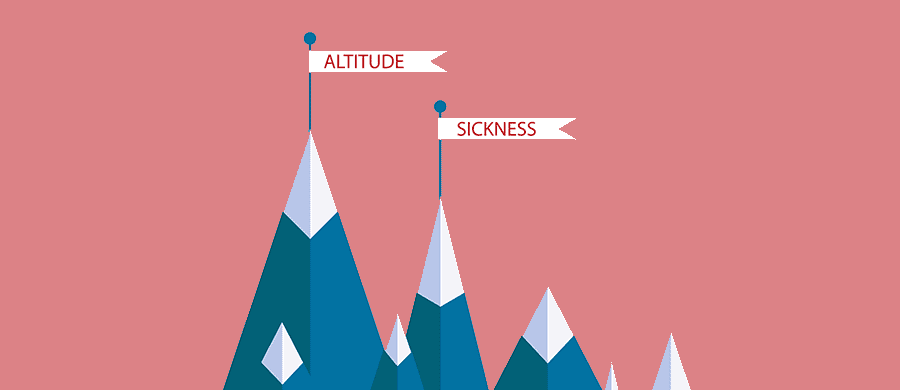The journey to high altitude can usually cause Acute Mountain Sickness (AMS) which is commonly known as high altitude sickness. It is a negative health effect of high altitude caused by the low amount of oxygen exposure at the high elevation. Many travelers experience it while traveling the altitude above 3000 m. Anyone can suffer with it as it does not care about age, sex, and fitness. So, considering of possible precautions, symptoms, and consequences of mountain sickness, here we have tried to show the key factors of it while your are trekking in mountain area of Nepal. Whether you are going for everest trek, manaslu trek or any other trek, our suggestion will be helpful for you in anywhere.
Symptoms of Altitude Sickness
The initial symptoms of AMS are headache, tiredness, vomiting, nausea etc. In the mountain area, altitude sickness can be very dangerous; it may even lead to the life threatening conditions. If you are feeling these symptoms over you or any of your team members, you should know that you are on the area of low amount of oxygen. Then you should go for normal preventive methods to avoid altitude sickness.
Precaution, Prevention and Treatment
The basic precautions to avoid Acute mountain sickness is to ascend higher altitude slowly. Gradual increase of the elevation will allow your body to acclimatize. You also should drink enough amount of water because dehydration is prone to altitude sickness. So, you should keep your body hydrated and drink lots of water. But make sure that water is boiled or drinkable. Moreover, the proper acclimatization is the most important thing during the mountain trekking. For an example, most hikers take a rest in Namche at least a day while trekking in Everest.
As a precaution of altitude sickness, you even can consult with your doctor and ask for preventive medication. Some doctors also suggest to avoid alcohol while trekking in the mountain.
The best treatment of altitude sickness is to descend to the lower altitude maintaining the hydration.
Nevertheless, sometimes the time may go wrong and the health condition might be worst. Meanwhile, you have to descend back to the lower altitude and need medical attention immediately. In this condition, the best option in the mountain can be helicopter evacuation.







